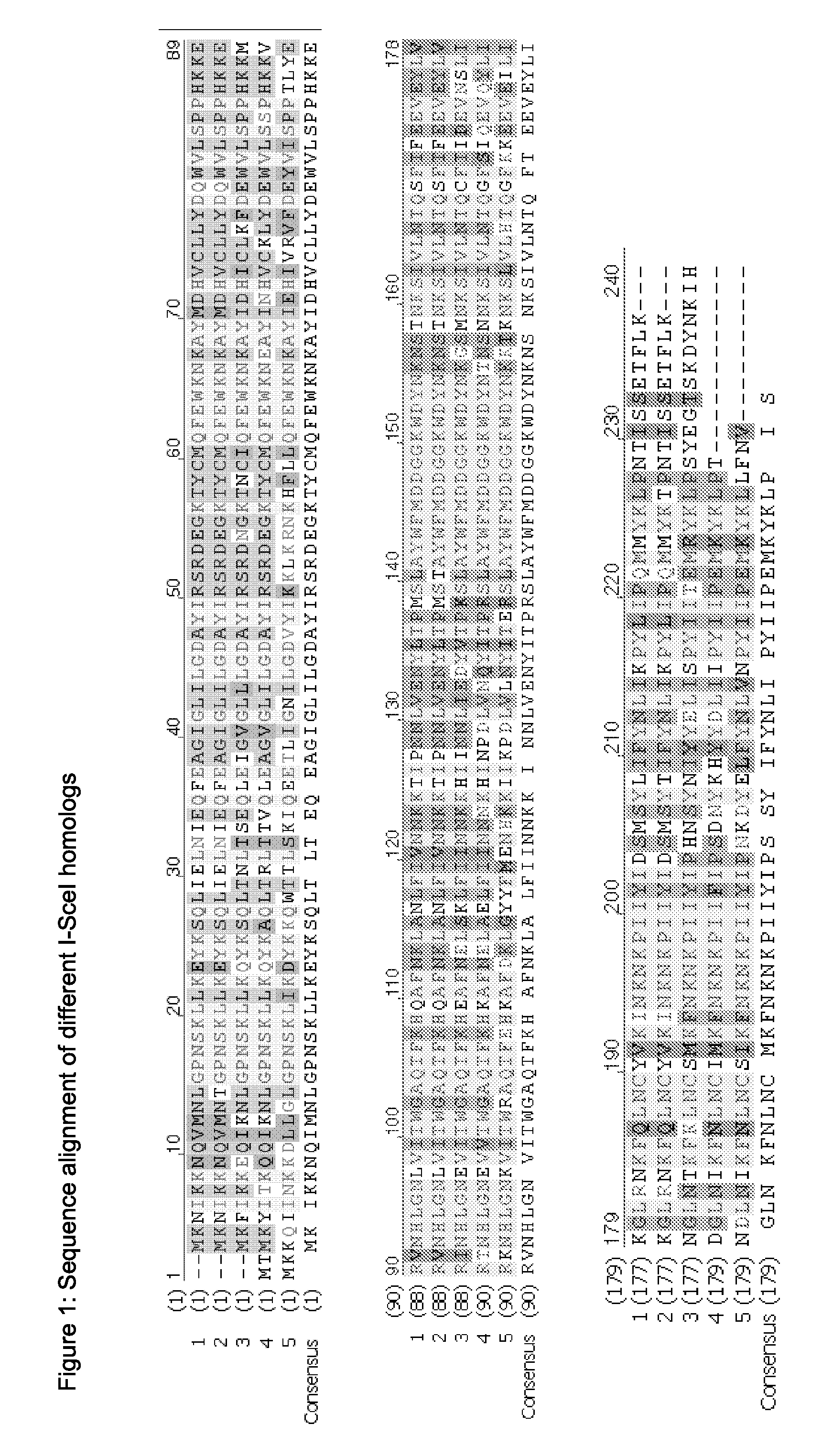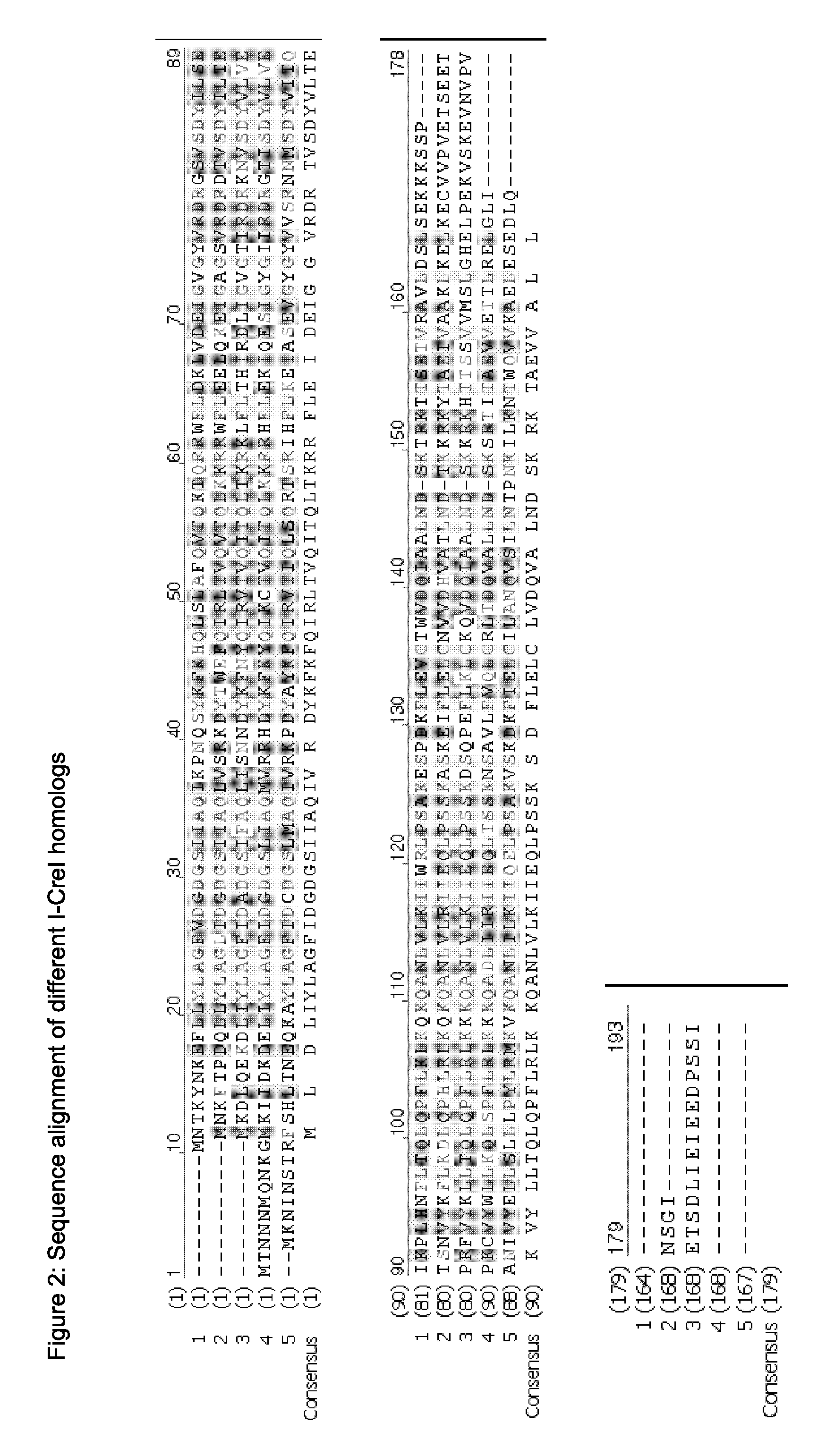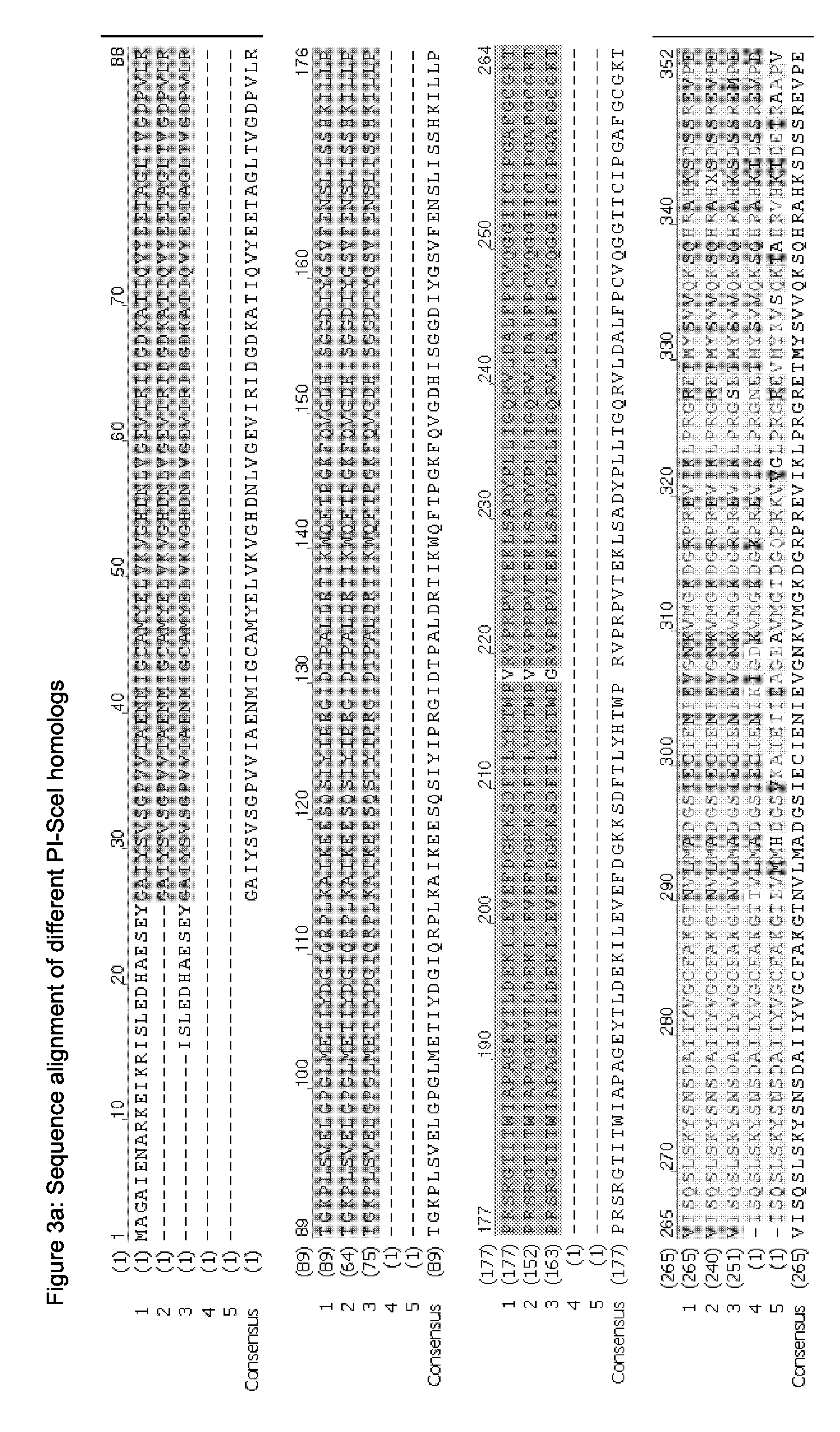Chimeric Endonucleases and Uses Thereof
a technology of endonucleases and chimeric endonucleases, which is applied in the field of chimeric endonucleases, can solve the problems of limited approach, unintended or even detrimental off-target effects, etc., and achieve the effect of facilitating homologous recombination or end joining events
- Summary
- Abstract
- Description
- Claims
- Application Information
AI Technical Summary
Benefits of technology
Problems solved by technology
Method used
Image
Examples
example 1
Constructs Harboring Sequence Specific DNA-Endonuclease Expression Cassettes for Expression in E. coli
example 1a
Basic Construct
[0434]In this example we present the general outline of a vector, named “Construct I” suitable for transformation in E. coli. This general outline of the vector comprises an ampicillin resistance gene for selection, a replication origin for E. coli and the gene araC, which encodes an Arabinose inducible transcription regulator. Different genes, encoding the different versions of the sequence specific DNA-endonuclease, can be expressed from the Arabinose inducible pBAD promoter (Guzman et al., J Bacterial 177: 4121-4130 (1995)). The sequences of the genes encoding the different nuclease versions are given in the following examples.
[0435]The control construct, in which encodes the sequence of I-SceI (SEQ ID NO: 22), was called VC-SAH40-4.
example 1b
scTet-I-SceI Fusion Constructs
[0436]In JOURNAL OF BACTERIOLOGY 150(2), 633-642 (1982) Beck et al. described the TetR protein. TetR acts as a dimer, but single chain variants (scTetR) are well described in NUCLEIC ACIDS RESEARCH 31(12), 3050-3056 (2003) by Krueger et al. The scTetR encoding sequence was fused to I-SceI, with a single lysine as a short. The linker was designed in a way that the resulting fusion protein recognizes a cognate binding site, which represents a combination of the binding sites of I-SceI and TetR. TetR is a transcriptional repressor, which binds to the DNA in absence of the inducer. It is displaced from the recognition sequence in the presence of tetracycline. This could provide the potential to regulate the activity or DNA binding affinity of the fusion protein in the same manner. The resulting plasmid was called VC-SAH54-4. The sequence of the construct is identical to the sequence of construct I, whereas the nuclease encoding gene was replaced by the sequ...
PUM
| Property | Measurement | Unit |
|---|---|---|
| dissociation constant | aaaaa | aaaaa |
| temperatures | aaaaa | aaaaa |
| temperatures | aaaaa | aaaaa |
Abstract
Description
Claims
Application Information
 Login to View More
Login to View More - R&D
- Intellectual Property
- Life Sciences
- Materials
- Tech Scout
- Unparalleled Data Quality
- Higher Quality Content
- 60% Fewer Hallucinations
Browse by: Latest US Patents, China's latest patents, Technical Efficacy Thesaurus, Application Domain, Technology Topic, Popular Technical Reports.
© 2025 PatSnap. All rights reserved.Legal|Privacy policy|Modern Slavery Act Transparency Statement|Sitemap|About US| Contact US: help@patsnap.com



